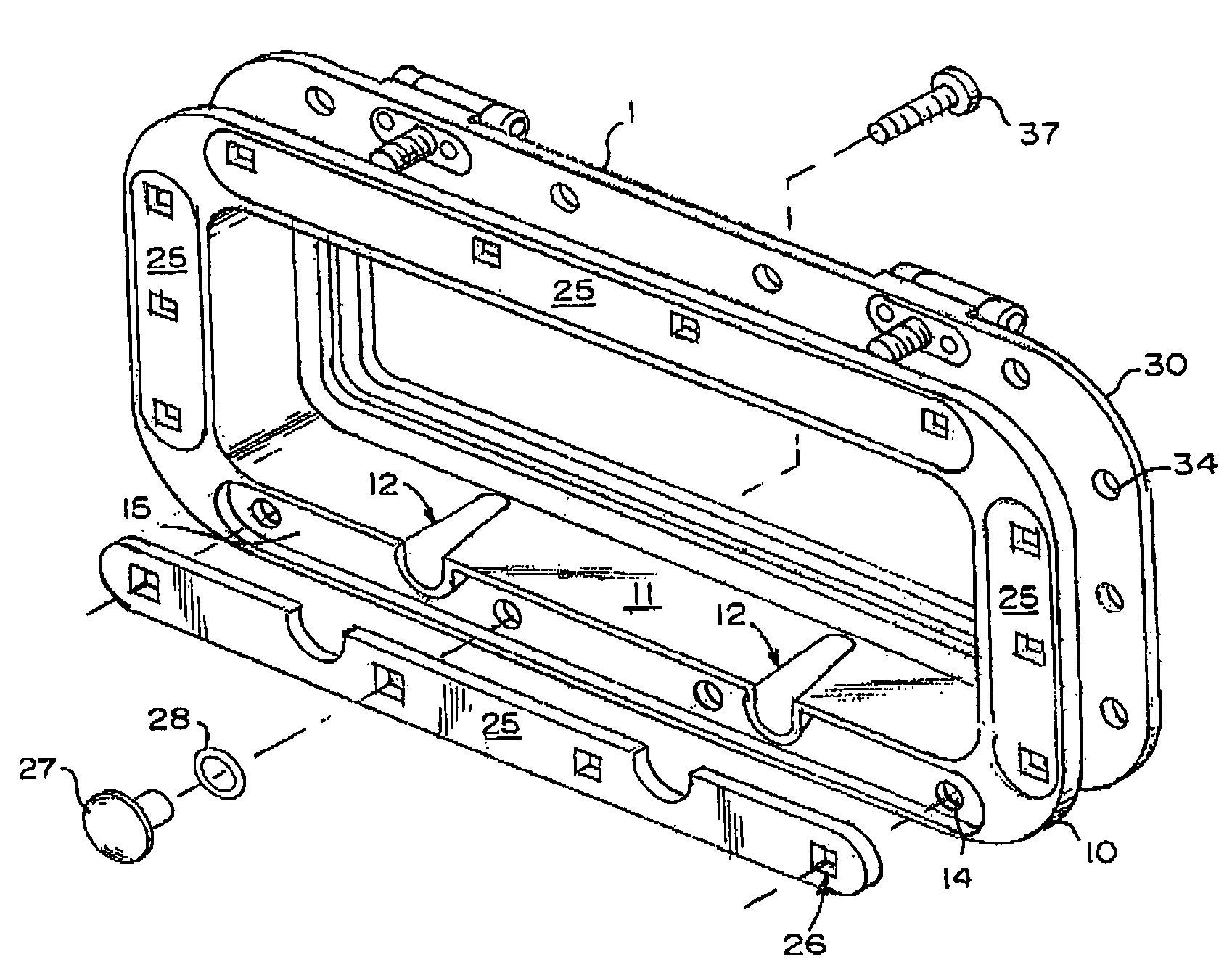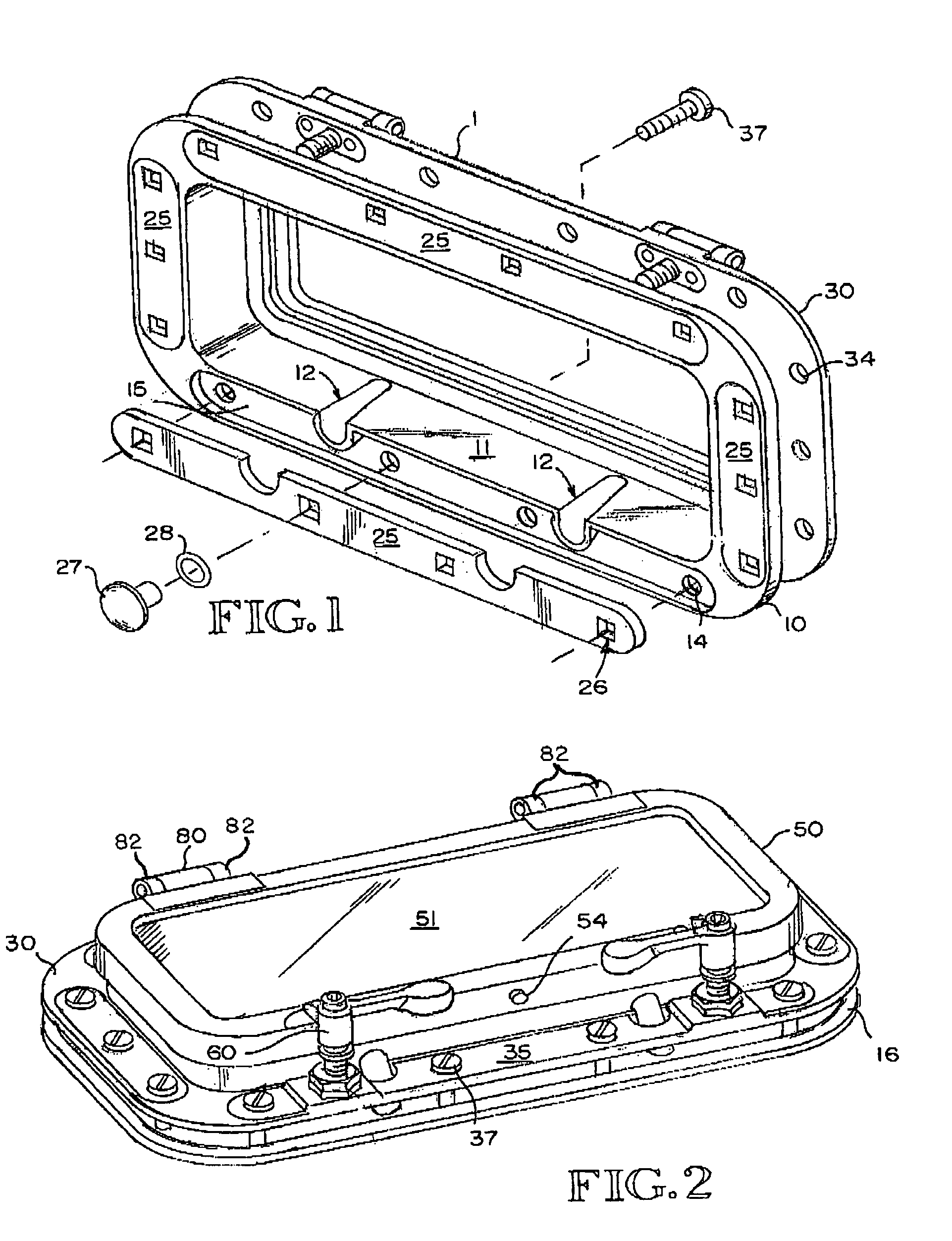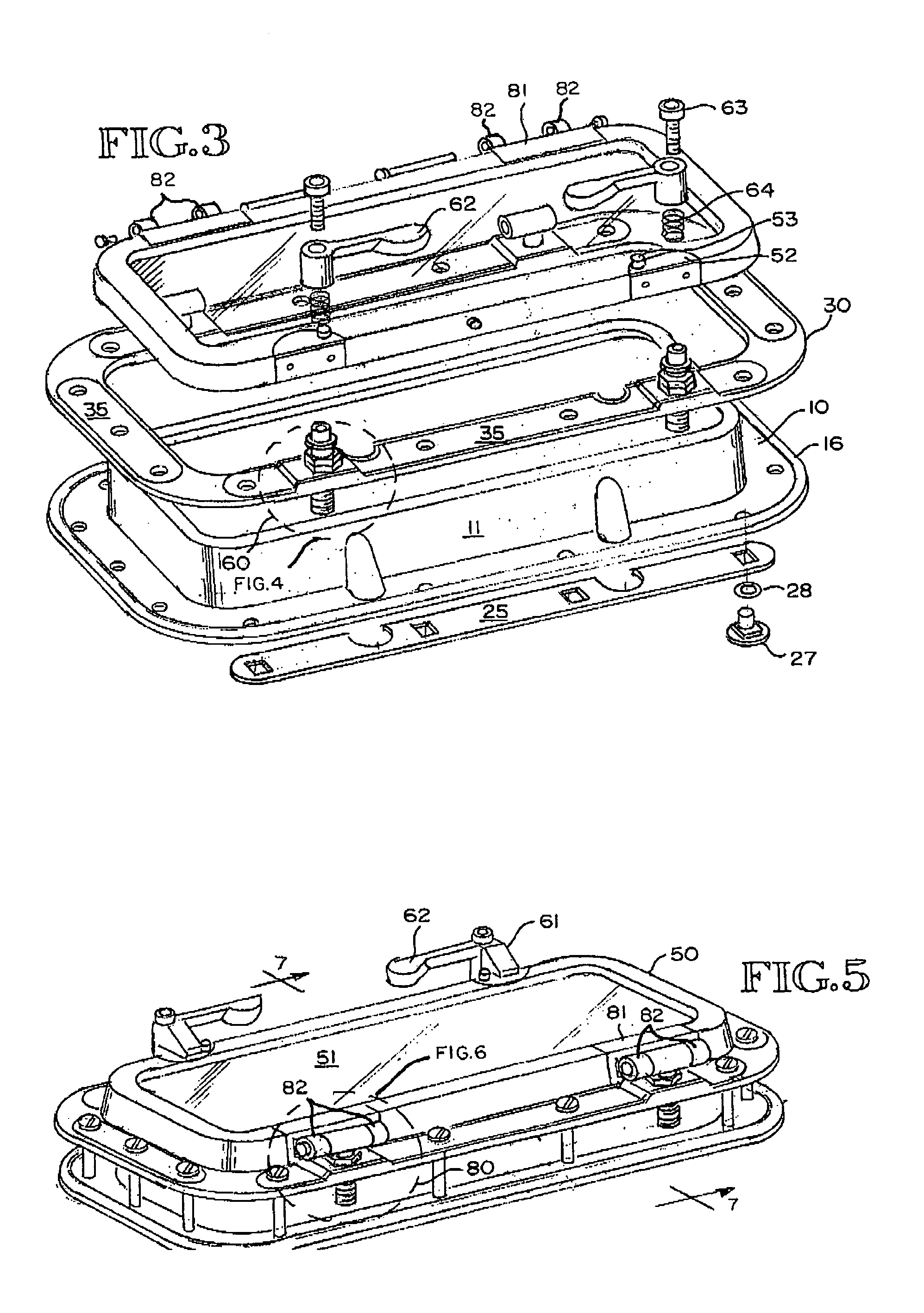Self-sealing port light assembly
a port light and self-sealing technology, applied in the field of port lights, can solve the problems of increasing the weight of the watercraft, affecting the operation of the vessel, and the frame materials are quite expensive, so as to reduce the overall weight of the boat, save production costs, and be convenient to install
- Summary
- Abstract
- Description
- Claims
- Application Information
AI Technical Summary
Benefits of technology
Problems solved by technology
Method used
Image
Examples
Embodiment Construction
[0039]Turning now to the drawings, the invention will be described in preferred embodiments by reference to the numerals of the drawing figures wherein like numbers indicate like parts.
[0040]FIG. 1 through FIG. 3 show a preferred embodiment of the port light 1 disclosed herein. The port light has a one-piece exterior frame that forms a spigot 11 and a finish ring 10. The spigot 11 is configured for insertion into a hole in the hull of a vessel from the exterior of the vessel hull. The spigot 11 of the embodiment depicted has a pair of grooves on the lower interior surface that function to drain water out of the spigot and away from the port light.
[0041]The finish ring 10 extends at a right angle from the end of the spigot that is not inserted into the vessel hull. The exterior frame is constructed from plastic, and the exterior surface of the finish ring 10 has a plurality of recessed areas 15 for insertion thin strips of metal 25 for reinforcing the frame. In the embodiment depicte...
PUM
 Login to View More
Login to View More Abstract
Description
Claims
Application Information
 Login to View More
Login to View More - R&D
- Intellectual Property
- Life Sciences
- Materials
- Tech Scout
- Unparalleled Data Quality
- Higher Quality Content
- 60% Fewer Hallucinations
Browse by: Latest US Patents, China's latest patents, Technical Efficacy Thesaurus, Application Domain, Technology Topic, Popular Technical Reports.
© 2025 PatSnap. All rights reserved.Legal|Privacy policy|Modern Slavery Act Transparency Statement|Sitemap|About US| Contact US: help@patsnap.com



